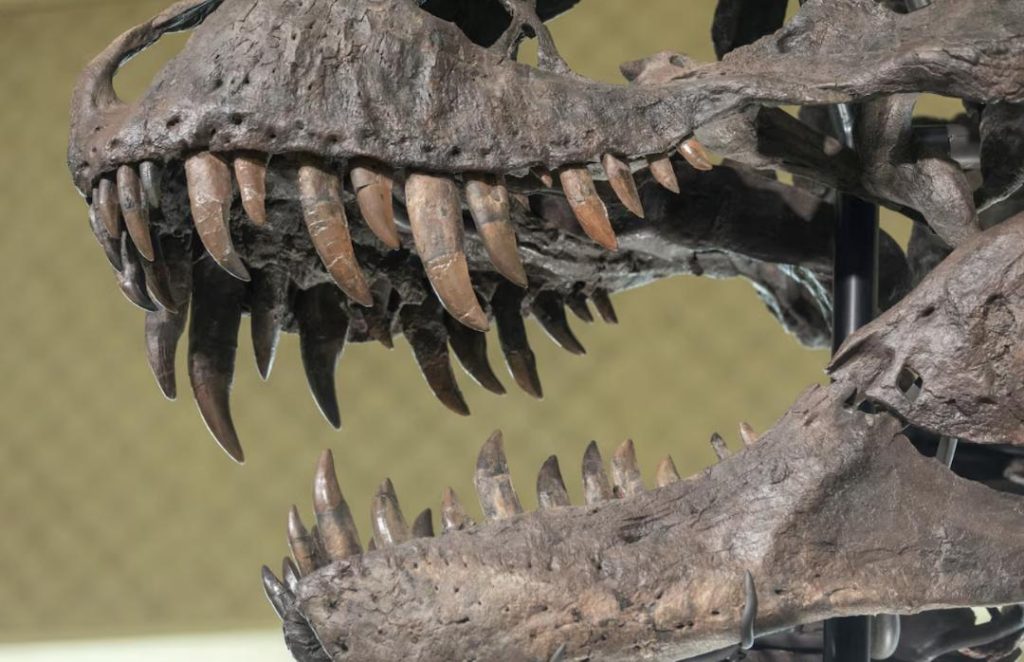
Study Shows How T. Rex and Other Dinosaurs Fed on Prey
The feeding habits of meat-eating dinosaurs have long fascinated scientists and the general public alike. For decades, researchers have studied the fossilized remains of dinosaurs, trying to understand how these prehistoric creatures obtained their food. A recent comprehensive analysis of the skull design and bite force of 17 species of meat-eating dinosaurs has shed new light on the feeding biomechanics of these ancient animals.
The study, published in the journal Science, reveals that Tyrannosaurus rex, the iconic predator, possessed the highest estimated bite force of all the species studied. With its heavily reinforced skull and massive jaw muscles, T. rex was well-adapted to take down large prey. In contrast, early dinosaurs like Herrerasaurus were lightly built and not well-suited to high bite forces.
To conduct the study, researchers from the University of California, Berkeley, and the University of Zurich used advanced computer simulations and biomechanical analysis to estimate the bite forces of the 17 species. The team examined the structure and shape of the dinosaurs’ skulls, as well as the size and arrangement of their jaw muscles. By combining these factors, the researchers were able to estimate the maximum bite force that each species could exert.
The results showed that T. rex had the highest estimated bite force, with a maximum force of around 6.5 tons per square inch (psi). This is equivalent to the bite force of a great white shark, and is significantly higher than that of any other dinosaur species studied. The researchers suggest that this high bite force allowed T. rex to take down large prey, such as triceratops and edmontosaurus.
In contrast, early dinosaurs like Herrerasaurus had much lower estimated bite forces, ranging from around 1-2 tons psi. This is likely due to their lightly built skulls and smaller jaw muscles. These early dinosaurs were probably adapted to feed on smaller prey, such as lizards and early mammals.
The study also found that the bite force of meat-eating dinosaurs varied greatly depending on their size and shape. For example, the smaller carnivorous dinosaur, Allosaurus, had a lower estimated bite force than T. rex, despite being slightly larger. This is because Allosaurus had a more slender skull and smaller jaw muscles than T. rex.
The researchers suggest that the evolution of high bite forces in meat-eating dinosaurs was likely driven by the need to take down large prey. As dinosaurs evolved and grew in size, they needed to develop stronger jaws and skulls to be able to capture and kill their prey. This is evident in the fossil record, where larger and more powerful meat-eating dinosaurs appeared over time.
The study also highlights the importance of biomechanical analysis in understanding the behavior and ecology of ancient animals. By examining the structure and function of dinosaur skulls and jaws, researchers can gain insights into the feeding habits and behavior of these prehistoric creatures.
In conclusion, the study provides new insights into the feeding biomechanics of meat-eating dinosaurs, and sheds light on the evolution of high bite forces in these ancient animals. The findings suggest that T. rex was a formidable predator, capable of taking down large prey, while early dinosaurs like Herrerasaurus were likely adapted to feed on smaller prey. The study also highlights the importance of biomechanical analysis in understanding the behavior and ecology of ancient animals.






